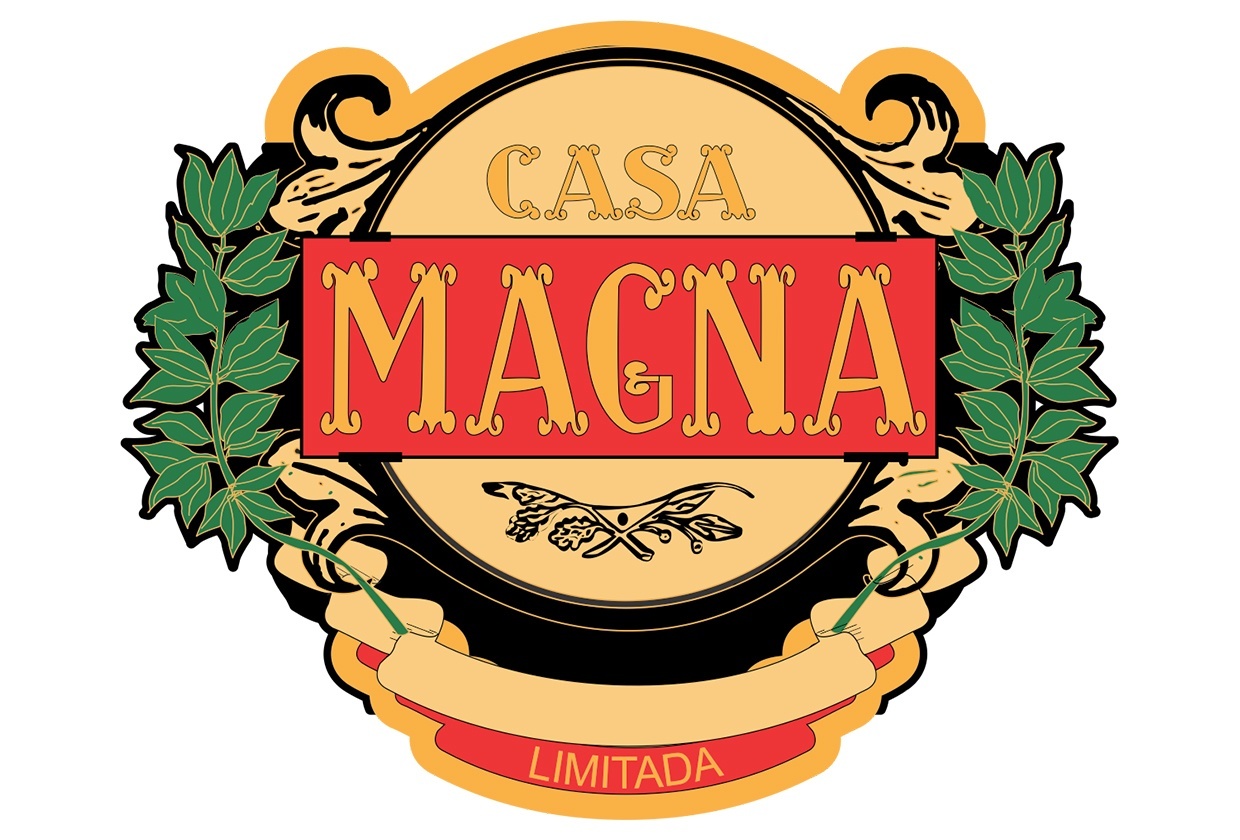A pair of new Casa Magna Domus Magnus IIs are on their way to retailers. The new Casa Magna Domus II Caligula and Tiberius should begin arriving at any moment and when they do, you might want to look closely at the two new vitolas.

One of the new sizes is the Tiberius is a 6 x 54 cigar that curves much like the ichthys, the Greek symbol more commonly known as the Jesus fish. From straight-on, it looks like one of the more intense box-pressings of recent memory, but it’s actually entirely round, much like a very long Bic lighter.
It is priced at $10.95 alongside the Caligula, a box-pressed double perfecto that actually looks round until you pick it up. At its thickest, the Caligula is 60 ring gauge, and it’s also six inches long, yet describing it as a 6 x 60 just seems wrong, as it’s a far cry from the gordo vitola.
With the new sizes, the Domus Magnus II line now sits at four vitolas:
- Casa Magna Domus Magnus II Optimus (5 3/4 x 52)
- Casa Magna Domus Magnus II Primus (6 1/2 x 55)
- Casa Magna Domus Magnus II Tiberius (6 x 54)
- Casa Magna Domus Magnus II Caligula (6 x 60)
The line is based off of the original Domus Magnus, a limited edition that debuted in 2011. In order to produce more of the once-limited cigar, the company uses a more readily-available 2007 vintage of the sun grown Jalapa, Nicaragua wrapper. As with almost every Casa Magna, the cigars are rolled at the Plasencia Cigars S.A. in Estelí, Nicaragua and distributed by Quesada Cigars, formally known as SAG Imports.
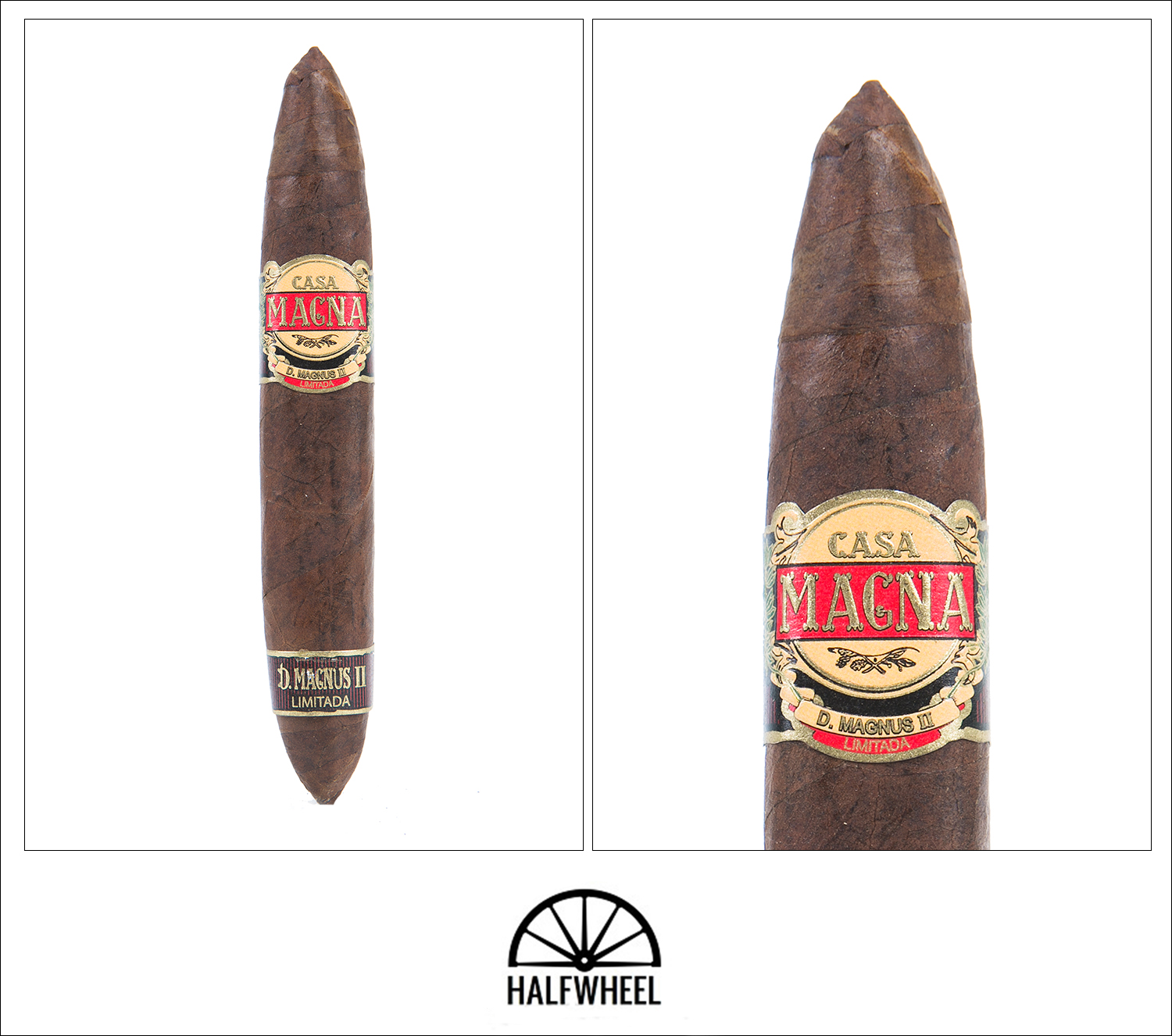
- Cigar Reviewed: Casa Magna Domus Magnus II Caligula
- Country of Origin: Nicaragua
- Factory: Plasencia Cigars S.A.
- Wrapper: Nicaraguan Sun Grown
- Binder: Nicaragua
- Filler: Nicaragua
- Size: 6 Inches
- Ring Gauge: 60
- Vitola: Double Perfecto
- MSRP: $10.95 (Boxes of 10, $109.50)
- Release Date: March 19, 2014
- Number of Cigars Released: Regular Production
- Number of Cigars Smoked for Review: 3
The Caligula looks like a Domus Magnus with the overly red Jalapa wrapper showing a bit of discoloration and pretty obvious roll lines. There’s a proper amount of resistance in the middle of the cigar, but the pointed ends—more specifically the area above and below each band—are quite hard. Aroma-wise, the lack of cellophane does not help, but there’s a bit of barnyard and a touch of pepper through the foot. From the cold draw I pick up nuts, a lot of sweetness and some familiar red pepper notes.
Things start off a lot fuller than I ever could have imagined. There’s almonds, sweet chocolate, soft pepper and warm cedar on a very long finish. It’s not just full in flavor, from the first puff the cigar is bordering on the edge of full strength-wise. An inch into the first third and the Caligula’s profile has become apparent: aged cedar, cocoa, soft pepper and something that reminds me a lot like cha sou, barbecue Chinese pork. Through the nose there is both a restrained sweetness and a restrained pepper. The draw is slightly tight, although I left plenty of room to clip more.
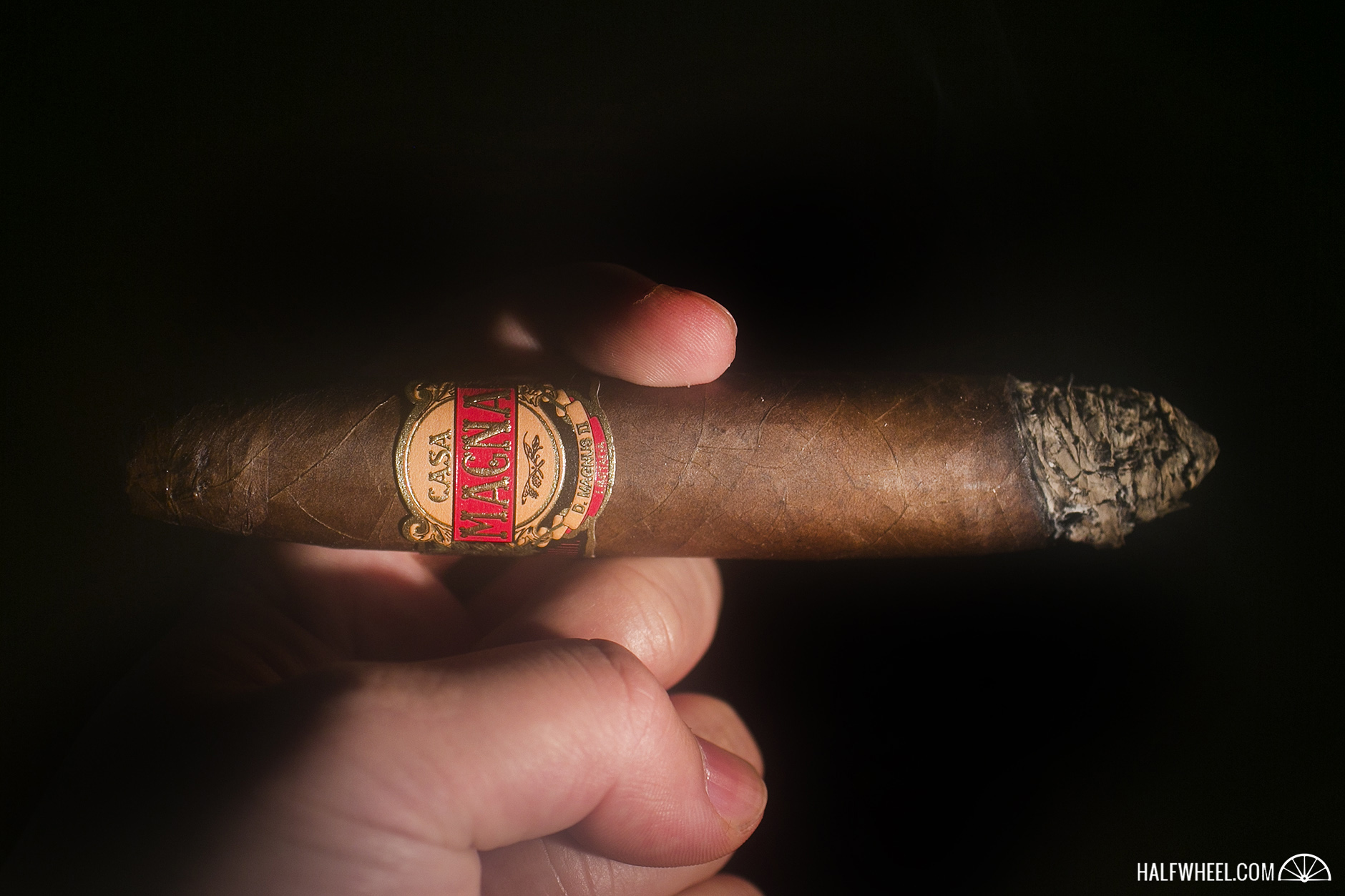
There’s not much different in the first half of the second third, a lime note emerges in the retrohale alongside a more generic meatiness. Right after the halfway note, things change—a hay note is added to the mix with an even larger toastiness. The sweetness of the Domus Magnus II is still there, but it’s overshadowed by the toastier portions. If there was any doubt about the strength, it’s now full. The draw is still a bit tight, well within my preference, and the burn requires a single touch-up before returning to its even-burning self.
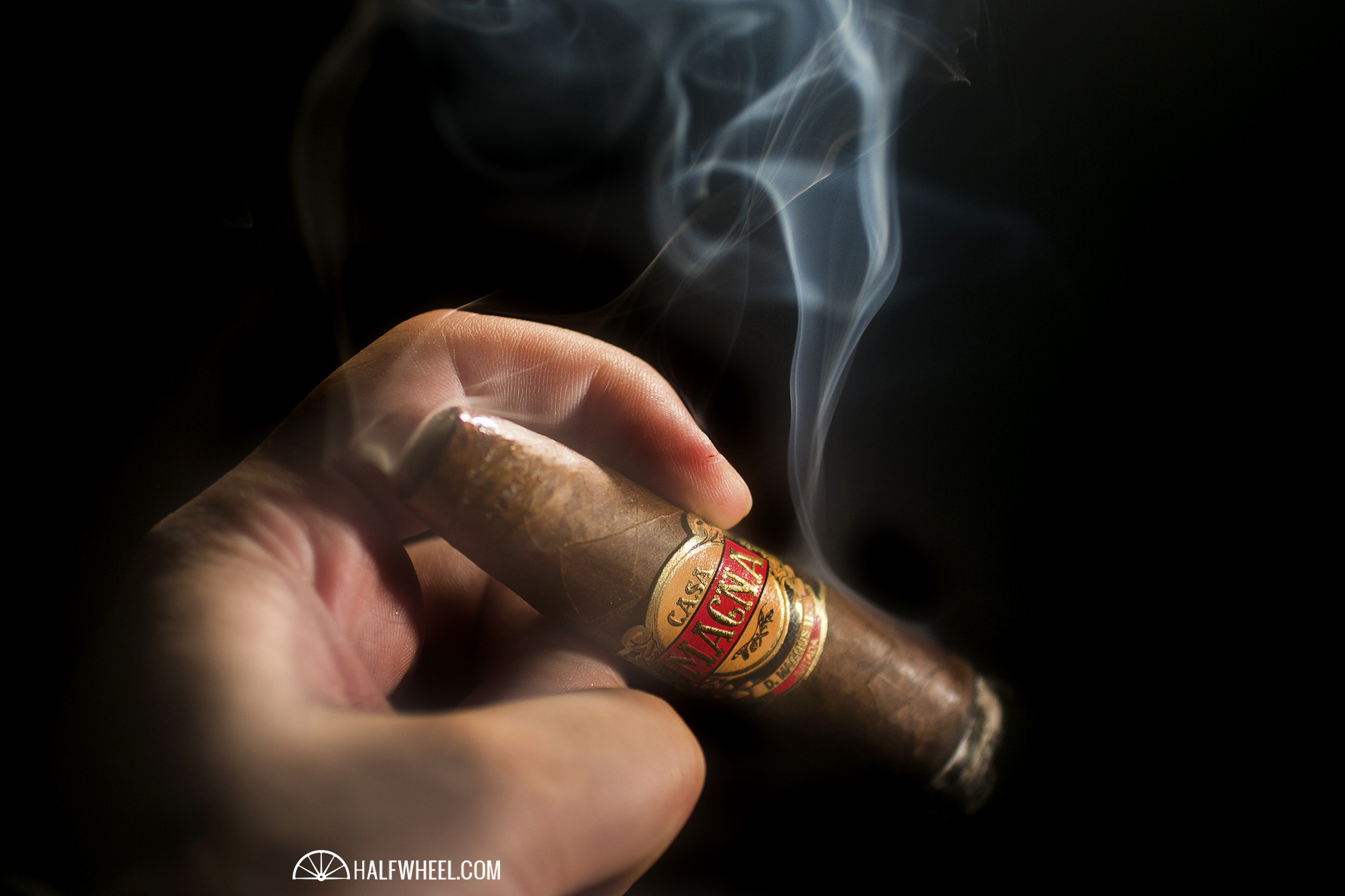
As the cigar burns into the tip of the perfecto, the temperature of the smoke itself picks up gradually. While that goes on, the toastiness disappears allowing for the sweetness to return alongside the grassiness and a new saltiness. At just beyond the two inch mark, a black pepper emerges through the nose, at times overpowering. I struggle to keep the cigar burning at an enjoyable rate and give up with over an inch left.
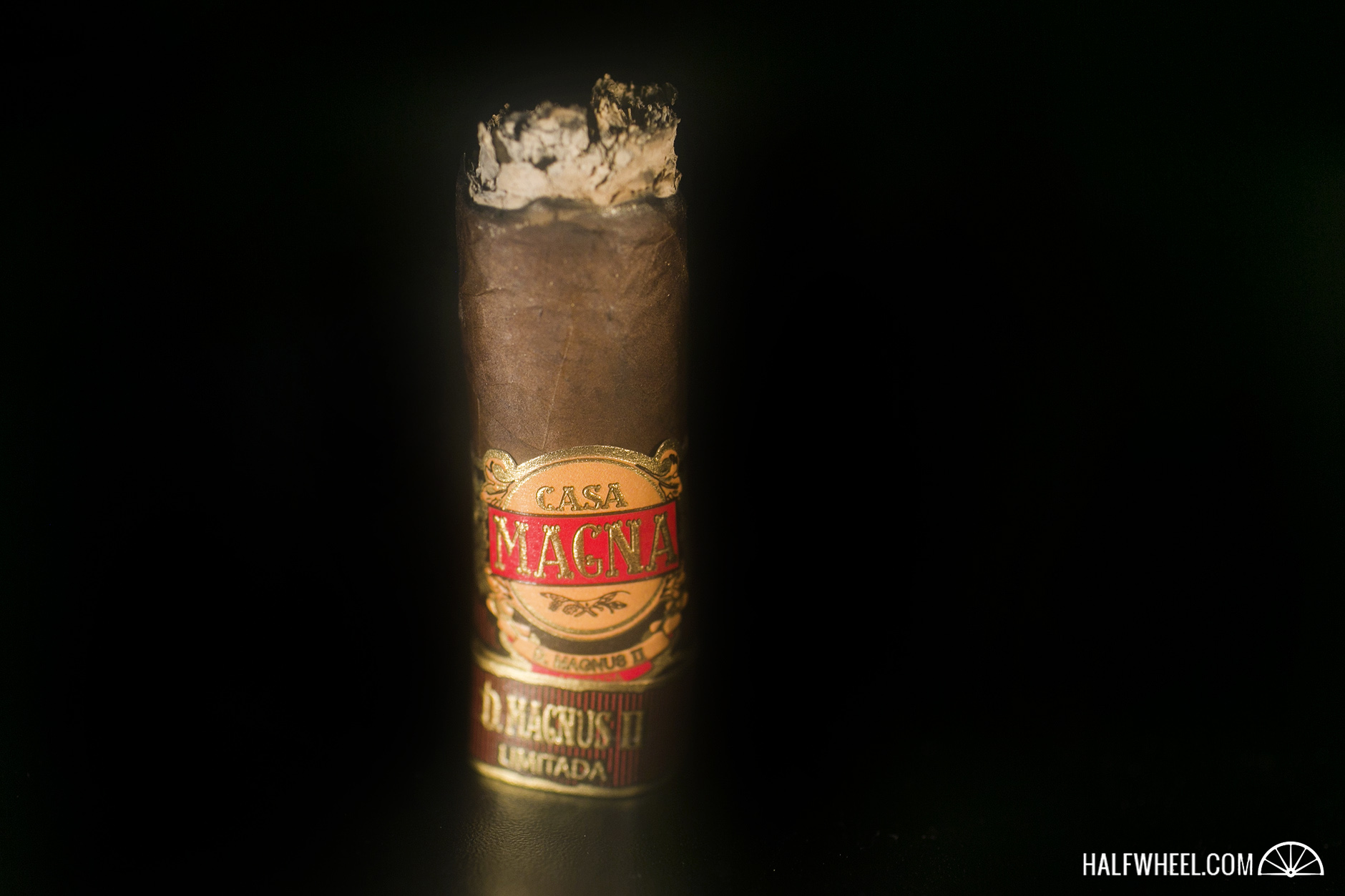
Final Notes
- Caligula ruled the Roman Empire from 37 AD to 41 AD.
- Quesada seems to be on a roll of late as far as innovating new sizes, the company’s new Q40 features a cigar that is both round and box-pressed in a shape the industry has never seen before.
- There is still a bit of youth, particularly in the second third. It’s not overly troubling and to some degree works with the profile.
- Quesada’s decision to make Domus Magnus II instead of just continuing Domus Magnus is one that a lot of companies would not do. The more common approach would be to simply saying that Domus Magnus is a regular production item and the blend didn’t change. The cigars of course do not taste identical, but the transparency on the change is not common.
- In fact, many would argue that changing the vintage of a tobacco would not classify as a blend change, it’s an accepted, but not talked about, part of the business.
- I was not impressed by the first two Domus Magnus II releases. They were not bad, but they did not stand up to the original Domus Magnus line as a whole in my opinion, and that’s never a good thing.
- I think this is easily the strongest cigar in the current Quesada portfolio and quite possibly the strongest cigar the company has sold since it was distributing Joya de Nicaragua. The original Domus Magnus creeped into full, this is at times loudly full.
- The box-pressed double perfecto is not a new thing, Viaje’s Double Edge Sword debuted in 2010 with a similar shape.
- Quesada is describing the Tiberius is being “eclipse-shaped.” I think the Jesus fish is a good way to describe, but many will gravitate towards the word oval. Obviously, A.J. Fernandez makes a cigar called the San Lotano Oval, which is oval-shaped, just not as intense. Confusing the Tiberius with the San Lotano is not going to happen and I suspect we will see a lot more of these sizes in the future from other companies, likely falling somewhere between the intensity of the A.J. Fernandez version and the Casa Magna, perhaps even more pronounced.
- At $10.95, the price is steep, particularly given the Casa Magna name was one built on affordability. The 10-count boxes could mean a box will sell for under $100 if retailers offer a 10 percent or higher box discount, that of course is before local applicable taxes.
- Final smoking time was one hour and 35 minutes.
- Samples for this review were provided by site sponsor Quesada Cigars.
The reality is Quesada has probably made three different Domus Magnus lines, while only making two blends. The change in shape, particularly on the Caligula size, has created so much more strength that after three samples I asked Terence Reilly, general manager for Quesada Cigars, if the blend had changed—it’s a whole different cigar in my opinion. I was not alone. Reilly told me he asked the factory to show him that they were using the same proportions for the blend, because he found the Caligula to be much stronger as well. Turns out they were, and this is just another example of why different sizes smoke differently.
It’s not just the nicotine, the body is fuller and the flavors are more intense—enough so that I imagine many who smoke the Domus Magnus II on a regular basis will have a hard time believing it’s the same blend. It’s hard for me to distinguish my preference between the original Domus Magnus and the Caligula—they are both very good examples of a full cigar, but quite different. Whereas one had a quiet strength, the Caligula was in your face from the start never once trying to hide anything.



